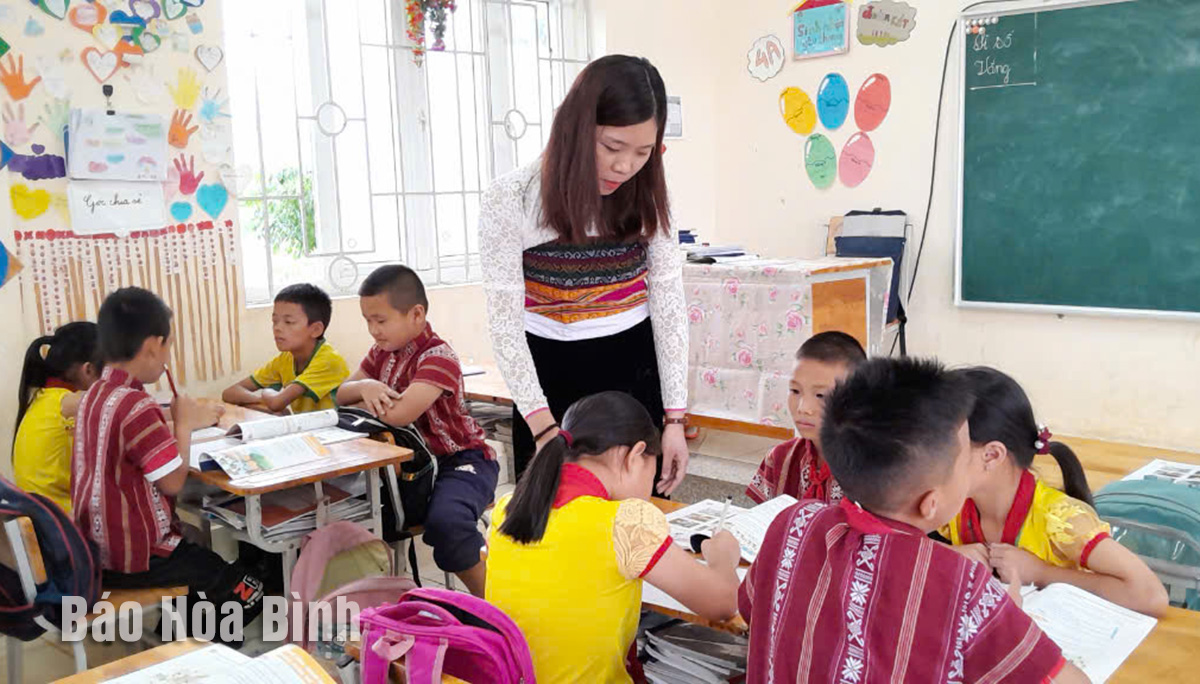



Pù Bin Primary and Secondary School in Thanh Sơn Commune (Mai Châu) has been implementing a "Tourism School Linked with the Community” model to raise the awareness and develop the life skills for students.
For the 2024-2025 school year, there are 50 schools at various levels in Mai Chau district. The district directly manages 45 institutions with 568 groups or classes and 12,122 students (3,655 in preschool, 4,947 in primary school, and 3,520 in secondary school). To innovate the teaching methods toward developing students' qualities and abilities, focusing on the student-centered activities that suit the ethnic minority students, many schools have built new models that significantly enhance the awareness and life skills, especially in the remote areas. A standout example is the Pu Bin Primary and Secondary School in Thanh Son Commune with its "Tourism School Linked with the Community” model.
Mr. Nguyen Đuc Giang, the principal of Pu Bin Primary and Secondary School, says: "In the 2023-2024 school year, the school has successfully implemented the "Tourism School Linked with the Community” model. By forming the cultural and arts clubs and folk games clubs, and "I Am a Tour Guide” clubs, the students have gained an understanding of how this model contributes to the local socio-economic development, especially in tourism. Equipped with this knowledge and skills, the students have become more confident in communicating and guiding others through the local tourism spots during the school activities. This lays a foundation for the school to continue the model in the 2024-2025 school year”.
To improve the quality of education for the ethnic minorities, Mai Chau district continues to direct the education sector to effectively implement Resolution No. 52/NQ-CP, dated on June 15, 2016, by the government, which aims to promote the human resource development for the ethnic minorities in the period of 2016-2020, with a vision toward 2030. The district has fully been implementing the policies supporting the boarding students under Decree No. 116/2016/NĐ-CP, dated July 18, 2016, by the government, ensuring the equal access to education and meeting the learning needs of the ethnic minorities. The special attention is given to enhancing Vietnamese language skills for the ethnic minority students, a key focus of the education sector. Therefore, the district’s Department of Education frequently organizes training for management and teaching staff on the methods and skills to enhance Vietnamese language proficiency based on the specific needs of the ethnic minority students. The schools are encouraged to organize extracurricular activities and Vietnamese language clubs to strengthen the language skills for these students.
Thanks to the flexible and comprehensive implementation of many solutions, the quality of education, especially in the remote areas, has markedly improved. Currently, 20 out of the 45 schools in the district meet the national standards, and all 16 communes and towns have achieved the universal preschool education for five-year-old children, literacy eradication at level 2, and universal primary and secondary education at levels 3 and 2, respectively.
Mrs. Nguyen Thi Quynh Lan, the Deputy Head of Mai Chau’s Department of Education and Training, says: "The 2024-2025 school year marks the implementation of the 2018 General Education Program across all grades, from grade 1 to grade 9. With the theme of "Discipline, Responsibility, Innovation, and Improvement in the Quality of Education and Training”, Mai Chau’s education sector is determined to effectively carry out 10 tasks and solutions, with the key targets such as achieving a nursery enrollment rate of at least 53%, ensuring 100% enrollment of five-year-old children in preschool, and 100% enrollment of six-year-olds in grade 1, as well as a 99% completion rate of the primary school program. The sector also aims to maintain and improve the education quality and try to have 51.1% of the preschools and general schools meet national standards”.